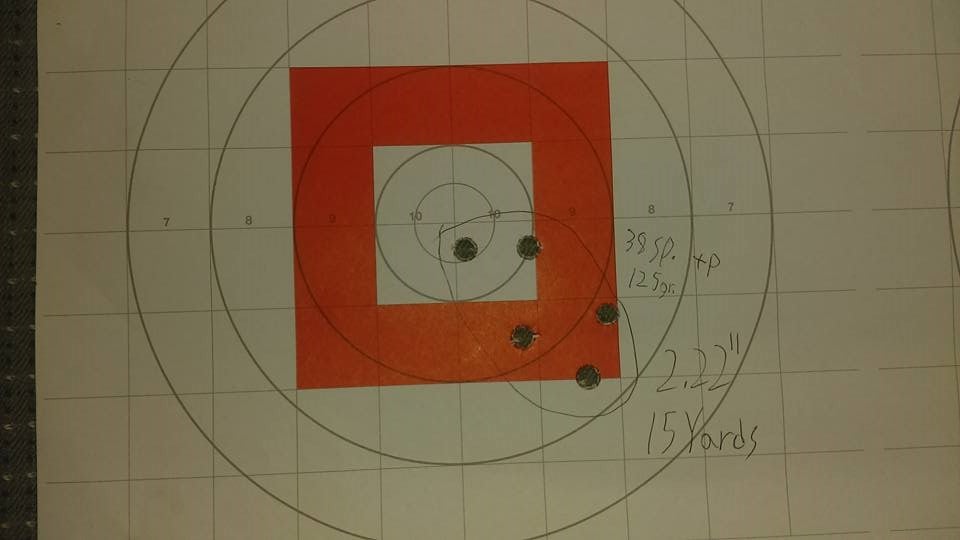Review: Henry Big Boy Steel Carbine in .357
Kevin Crank 05.24.16

Introduced in the 1860’s, The Henry rifle showed up in the hands of the Union in the midst of the civil war. When the Confederates encountered the Union troops they dubbed it “A rifle that you could load on Sunday and shoot all week long.”
Over the years the Henry rifle has been synonymous with classic cowboy shooting, plinking cans with the old 22, and generous doses of nostalgia. Since 1996, Henry Repeating Arms has brought back the classic brass frame and front-loading tubular magazine that many have come to know and love.
But a few weeks ago, I was asked to review a new type of Henry. What? I thought to myself. What could be new about a Henry? Well, the frame really.
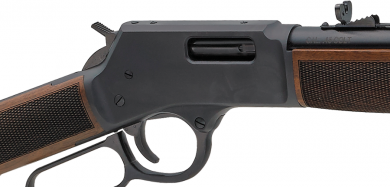
This is the Henry Big Boy Steel, an alternative to the traditional brass framed version. I was sent the Carbine model in .357 Magnum, and I had something to say about it the moment I held it: “Man this is handy!” With a 16.5″ barrel and a nice weight of 6.59 pounds, it was comfortable, even to my noodle arms. The price isn’t bad, either, at a nice $850 MSRP compared to the normal $899 MSRP of the brass frame Big Boy.
Another feature of the Carbine model is this little beauty.
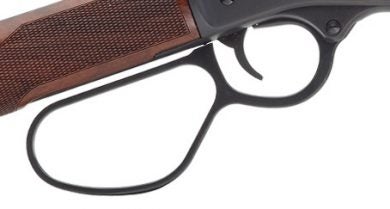
I am not going to lie. I tried to do the fancy lever action flick-cock (unloaded, of course). I have three words for you: Don’t do it! This feature is described on their website as the “glove-friendly oversized lever…” Meaning that it’s for gloved hands. If you try the flick-cock trick, the initial lockup–highlighted in the next picture–will prevent the lever from moving and force all of your fingers into the back, smashing 6.59 pounds of rifle onto a half-inch area around your bunched up fingers. That was a painful lesson.
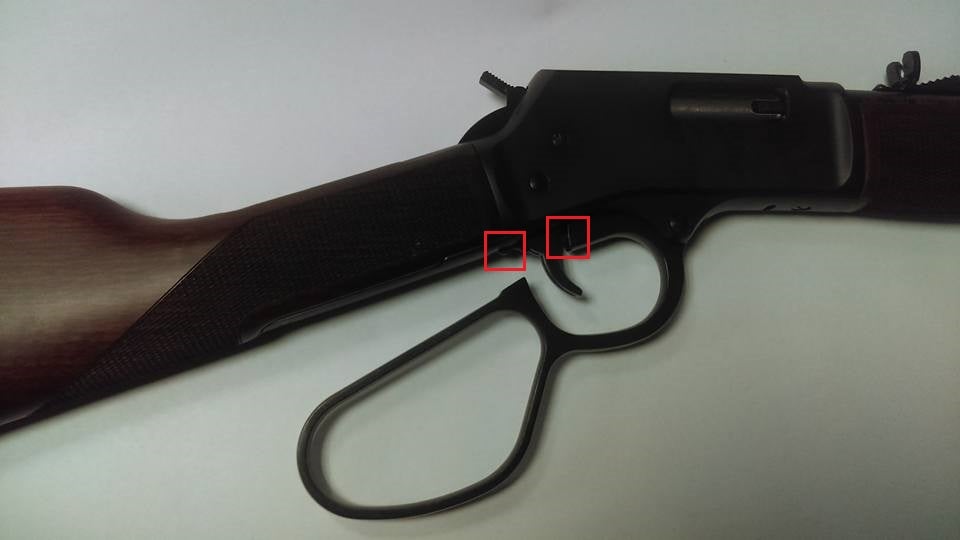
That embarrassment aside, I took it to the local range and blasted away about 220 rounds of assorted ammunition.
Recoil and Accuracy
Here were the accuracy results from the ammunition I could get my hands on.
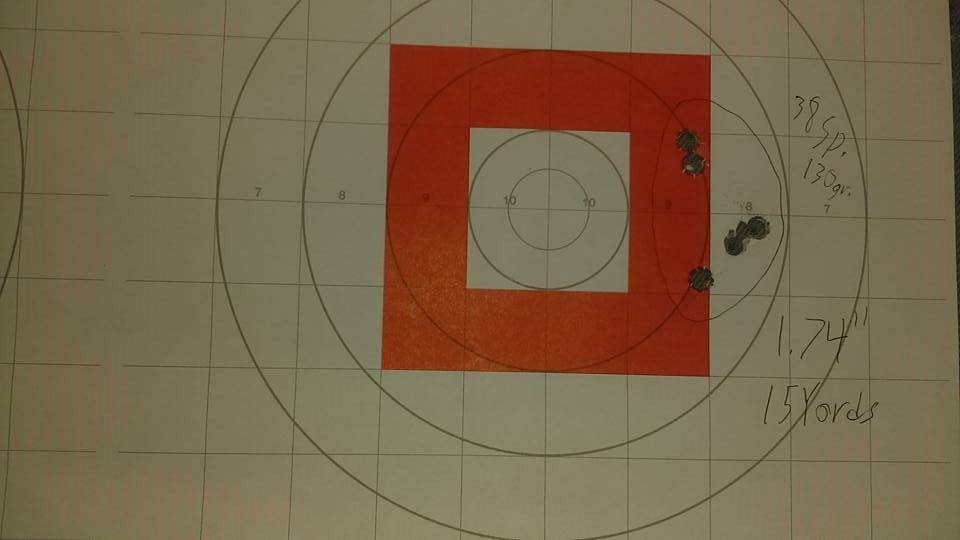
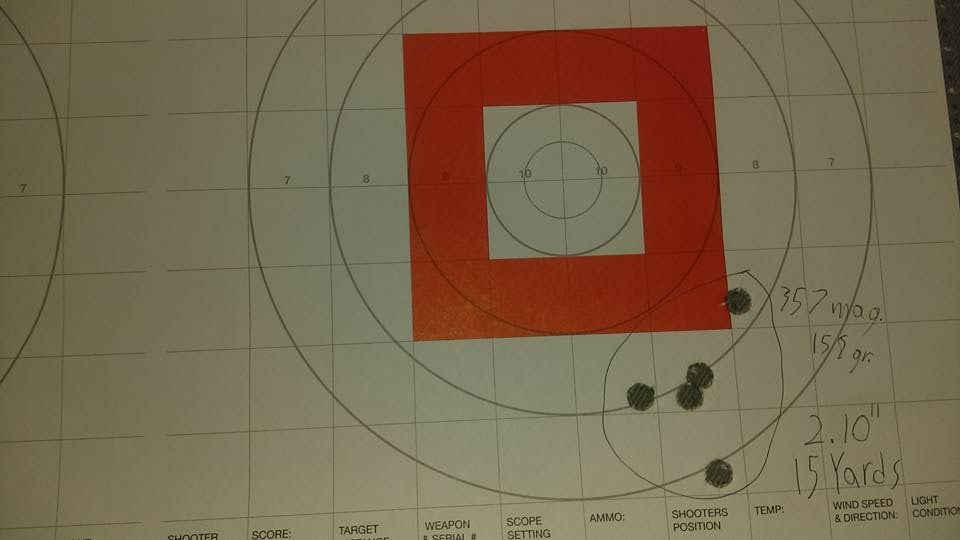
The elevation was my fault, and to keep it constant I had to keep aiming at the bottom of the inner square. The windage was, unfortunately, not entirely my fault. I guess I bumped the sight at some point and nothing I did could straighten it out.
Anyhow, I was okay with the off-hand accuracy, and I was fairly confident that if I supported myself with a tree I’d easily be able to hunt with this. Granted, I’d need to use the correct ammo. I’ll get to that in a second.
With standard 38 Special the recoil was so light that it felt like an airgun. When my father tried it he stopped shooting and looked at me in horror. “I don’t think anything came out.” he said. We checked with the range officer and he confirmed that there was no bore obstruction. It was that soft shooting.
With the +P, I definitely felt something, but not enough to knock me around. The 357 Magnum though, ouch. After one 158 grain soft nose round, I was thankful for the rubber recoil pad.
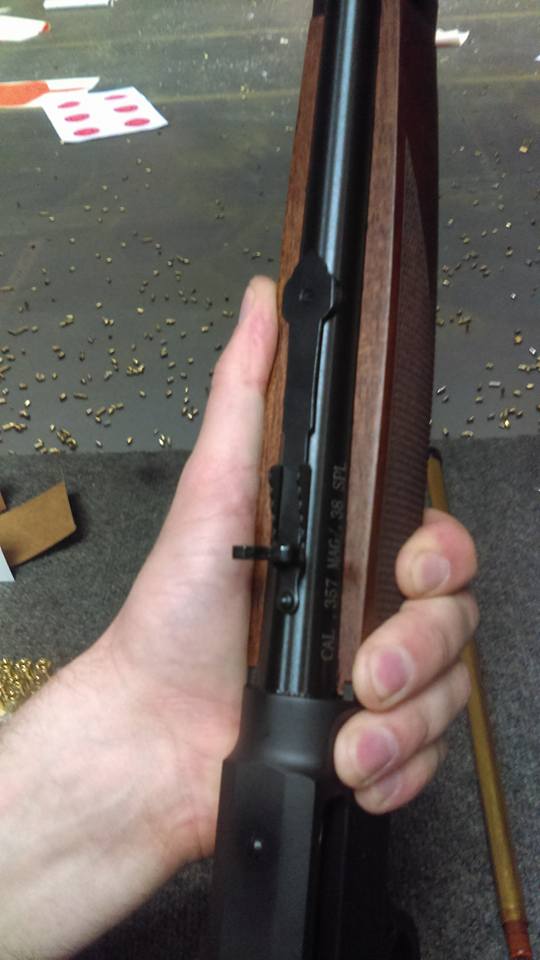
When I passed the gun to my brother after a string of shots, he noticed right away that the barrel, right where the chamber was, was painfully hot. Now, this would not be a problem if you’re out hunting, especially with gloves on. But at the range, it was apparent from round seven.
My brother also noted that the rear site feels like it’s “stapled on.” I brought up that there are peep sights available, and I think we agreed that we think a peep sight should be the standard optic–or come with the gun–for anyone who’s too partial to the nostalgia of the buckhorn sights.
Cycling
The cycling of this carbine has a bit of a stutter to it (it’s fully lubricated) when the action is closing. Though this is almost unnoticeable in the midst of a solid, quick set of cycling.
So, I had a bit of a hiccup on my first outing. This being my first experience with a pistol-caliber lever action, I was excited and didn’t put enough thought into the ammo I got. Suffice it to say, I sabotaged my own first impressions with the gun by using ammo that it didn’t like, 130 grain Winchester 38 Special, 125 grain Winchester 38 Special +P and 158 grain Federal 357 Magnum.
The .357 ran fine, but the length and weight of the 38’s were not what this gun was built for, so it would hang up every few rounds. I called Henry and asked what could be wrong, and they suggested it may be the ammo. Right after talking with them, I had the brilliant idea of doing that thing that guys just don’t do. I read the manual. I’m still trying to get my man card back but I did find my answer. Yes, they say not to use 110, 125, or 130 grain 38 special or any 158 grain .38 that doesn’t mimic the overall length of .357 magnum. I dun goofed. Plain and simple.
There was one more particularly odd malfunction that had me puzzled until I thought about it the next day. I loaded up nine 38 Specials–yes, you can get nine in the tube if you drop the last one in the top–and said “Okay, the only way to get flawless cycling with 38 Special is to be forceful. Quick chambering, quick ejection.” I tried shooting as fast as I could with no failures. Then, the lever didn’t close. I opened the action and nothing came out.
A live round had somehow gotten stuck behind the ejector, so it wouldn’t eject. The round beneath it had moved onto the elevator and pressed itself into the bottom of the bolt, so it wouldn’t close. It was the strangest double feed I’d ever seen. The range officer gently nudged the jammed round out with a dowel rod and we were back in business. Lesson: deliberate cycling and the use of 357 will provide the most reliable results. I only got flawless cycling with 357 magnum.
So, to confirm my suspicions, my next purchase was a box of nothing but 158 grain 357 magnum from PPU and on the last range trip the gun cycled wonderfully when I did my part of not short cycling it. The round being caught behind the ejector happened only once in my first test and once with my last testing with it; all 357. So, I wouldn’t expect it to be an frequent problem, and there where no double feeds in the final test.
Loading
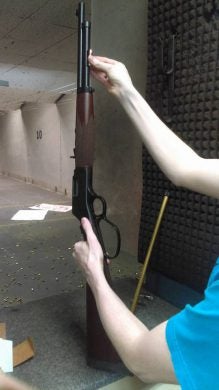
All of the problems I mentioned could be solved by personal precaution, research, and aftermarket purchases, but I mention them so that if you pick up this carbine you hopefully don’t make the same mistakes that I did.
I only have one actual complaint, and that’s with the loading. Compared to its contemporaries–Marlin and Winchester–the Henry has an easy but inconvenient loading method. As I said earlier, this is my first experience with a lever action of this caliber. However, I understand how the mid-frame loading gate works on my shotgun and that it is a similar system on the other lever action brands.
Let me bring up a problem I had during my final evaluation and something my brother warned me against as soon as he got a look at it. I was reloading the tube and replacing the brass follower when the follower slipped right out of my fingers and launched out into the range. My fault, I’ll own that, but it’s one of those things you have to look out for with this design. The Range officer had to ask people to stop shooting in order to retrieve the follower for me.
I understand this is a historical rifle. It is designed to preserve the memories of the past. That’s wonderful, beautiful even. My brother and I lovingly equated it to be “Like a fast muzzle loader.” But given the choice, if had to buy a Henry lever action, I’d get the 5 round box magazine Long Ranger.
“So you want the Henry to be just like the other lever actions?” No, I’m just a man giving his opinion. If Henry wants to take notes and change how loading it works, that’s awesome! I’d be flattered if they did. But what I’d like is to not have to feel like I’m taking the gun apart and putting it back together to reload and be sure I don’t lose parts of the gun in the process.
Put simply, I’m not into front loading tubular magazines, and that’s just a personal opinion. For those who aren’t bothered by this particular type of loading mechanism, then feel free to ignore my comments on this.
Conclusions
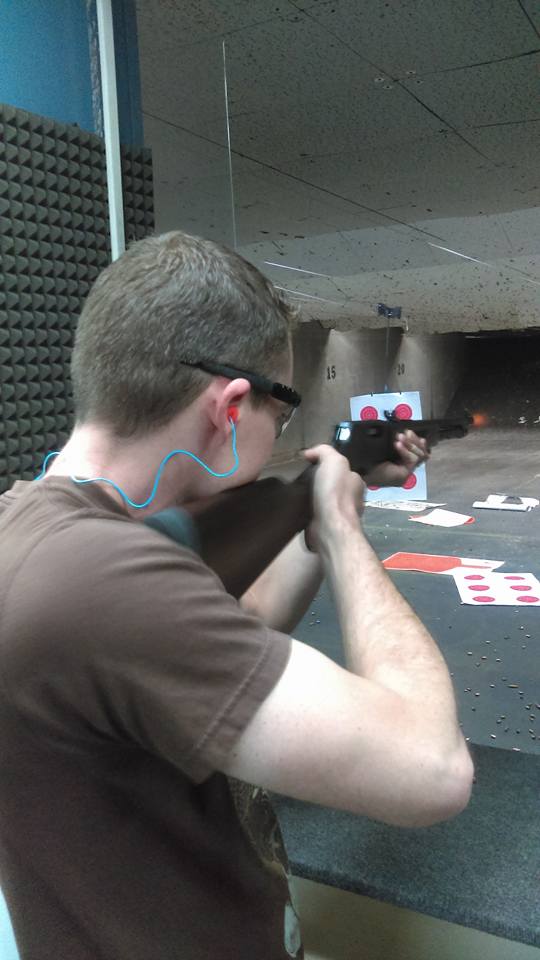
From the first round to the last round, I had fun! The trigger on this gun is fantastic and the recoil is pleasantly manageable.
If this was my gun, I’d sight it in at the range, go out, load it, shoot about five to seven times, and haul a deer home. The steel construction and lower price give me confidence that I could hoof it around, beat it up, and it would work no matter what. It’s accurate and reliable, if you know how to handle it and use the correct ammunition. There are aftermarket peep sights and mounting options available that you could utilize quickly after purchase if you’re not into the standard buckhorn sight. Finally, I love shooting this handy little carbine (but I just can’t stand loading it).
| Big Boy Steel Carbine .357 Magnum /.38 Spl | |
| Model Number | H012MR |
| Caliber | .357 Magnum /.38 Special |
| Capacity | 7 rounds |
| Length | 34″ |
| Barrel Length | 16.5″ round |
| Weight | 6.59 lbs. |
| M.S.R.P. | $850.00 |
